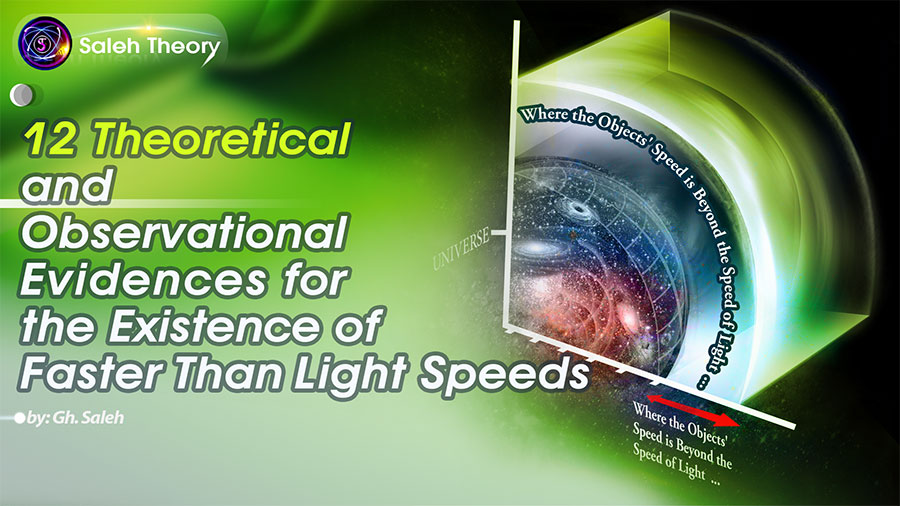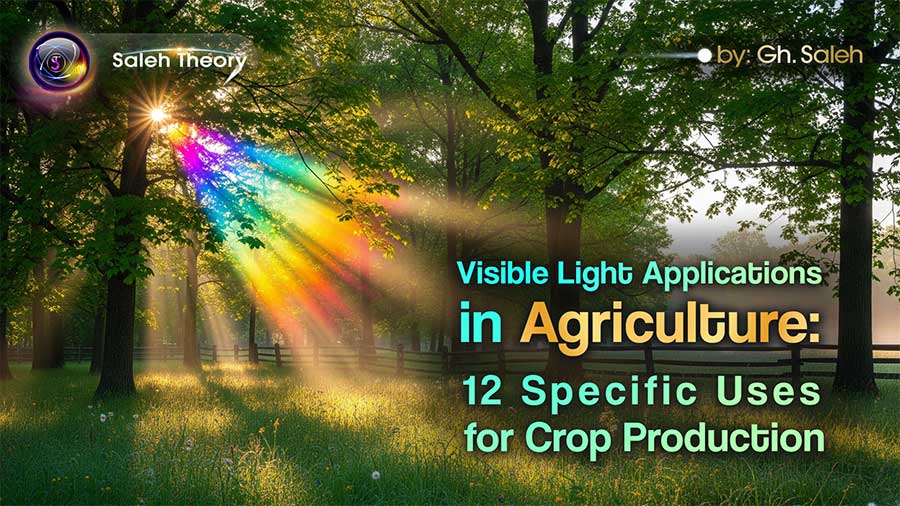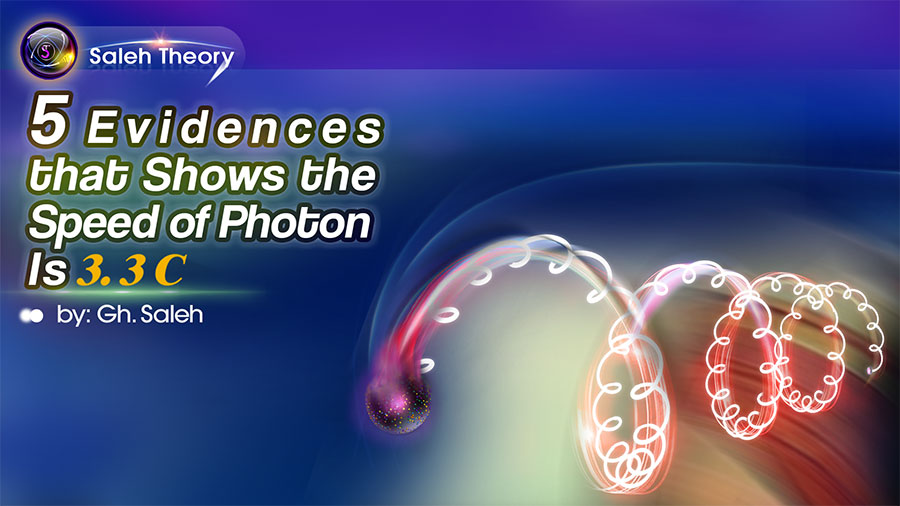
12 Theoretical and Observational Evidences for the Existence of Faster Than Light Speeds
Is the Speed of Light Really the Universe's Ultimate Speed Limit?
For over a century, Einstein's Special Relativity has posited the speed of light, C, as the fastest possible speed in the universe. However, experimental advancements, cosmic observations, and novel physical theories have progressively cast doubt on this limitation. Evidence, from the lab to the furthest reaches of the cosmos, suggests that what we call the 'ultimate speed limit' might merely be a computational and conceptual boundary, rather than a fundamental truth. Below, we will present 12 scientific and theoretical reasons for the potential existence of speeds faster than light.
1. University of Michigan and MIT experiments
In two independent experiments conducted at MIT and the University of Michigan, it was observed that over very short distances, the experimental value for the energy of electromagnetic waves doesn't align with Planck's Law. According to papers by Saleh Research Group, this discrepancy arises from the helical speed of photons exceeding “C”.
2. No logical reason for the speed of light to be limited
There's no fundamental law or definitive experiment that truly demonstrates no particle or wave can travel faster than light. The limitation of light speed is more a theoretical premise in relativity than an absolute physical principle.
3. Photon speed in a black hole's gravitational field
Given that photons have an extremely small mass, the intense gravitational pull of a black hole could increase their kinetic energy and, consequently, their speed beyond “C”.
4. Speed at the Big Bang
Analyses based on Monte Carlo methods and equations, as well as papers by Saleh Research Group, indicate that during the initial Big Bang explosion, the speeds of some objects were significantly greater than “C”.
5. Hubble's law and speed at the edges of universe
According to Hubble's Law (V=HD), when the distance of galaxies exceeds several billion light-years, their speed surpasses “C”; a phenomenon also accepted in modern cosmology.
6. Helical motion of photons
As per the model proposed by Saleh Research Group, photons exhibit a helical motion along their propagation path, which causes their effective speed to reach approximately five times “C”.
7. Optical doppler effect at high speeds
In conditions where the light source and observer approach each other at very high speeds, the received frequency increases. According to a paper by Saleh Research Group, this suggests light has travelled at a speed greater than “C”.
8. Resultant motions of electron during photon emission
When emitting a photon, an electron is moving at speed “C” around the nucleus and also around itself. The photon emitted from this electron possesses the sum of these speeds and moves at a speed greater than “C”.
9. Return of objects in the Big Bang cycle
According to a paper by Saleh Research Group, after expansion, the universe returns to contraction. In the final stages of this cycle, the return speed of objects is so high that it exceeds “C”.
10. Discrepancy between Planck energy and photon kinetic energy
Given that photons have mass, a comparison of Planck energy with kinetic energy suggests their speed must be greater than “C” for equilibrium to be maintained, based on a paper by Saleh Research Group.
11. Super string theory and helical motion of photon
In Super String Theory, the universe has 11 dimensions. The only model that justifies motion in these dimensions is the helical photon model, where the effective speed of the photon is greater than “C”.
12. Cosmological equations of motion
In the equations presented by Saleh Research Group for cosmic cycles, during certain phases of the objects' outbound and inbound journey between Big Bangs, the calculated speeds exceed "C", a result that directly stems from the structure of the equations of motion.
Conclusion:
Although the Special Theory of Relativity remains one of the fundamental theories used in modern physics, new experimental evidence, astronomical data, and theoretical analyses indicate that the speed of light isn't the ultimate limit. Investigating phenomena beyond “C” won't just transform our understanding of space-time structure but could also pave the way for novel physics, unifying theories, and even future technologies.
The universe, perhaps, is faster than we think.
References:
[1] Chandler, David L. “Breaking the Law, at the Nanoscale.” MIT News | Massachusetts Institute of Technology, news.mit.edu/2009/heat-0729 . Accessed 29 July 2009.
[2] Thompson, Dakotah, et al. " Hundred-fold enhancement in far-field radiative heat transfer over the blackbody limit. " Nature 561.7722 (2018): 216-221.
[3] Gandolfi, Stefano, J. Carlson, and S. Reddy. “Maximum Mass and Radius of Neutron Stars, and the Nuclear Symmetry Energy.” Physical Review C, vol. 85, no. 3, 2012, p. 032801.
[4] Saleh, Gh. "New Computational Table of Physical Parameters for the Moments of Beginning, Inflation, Present, and End of the Universe 2025." Saleh Theory, 06 Mar. 2025, https://www.saleh-theory.com/article/new-computational-table-of-physical-parameters-for-the-moments-of-beginning-inflation-present-and-end-of-the-universe-2025
[5] Saleh, Gh. "New Proof of Photon Velocity (VT = 3.3 C) Utilising Ever-True Planck Energy Equation and Kinetic Energy Equation in the Universe 2025 Part B." Saleh Theory, 03 May 2025, https://www.saleh-theory.com/article/a-new-proof-of-photon-velocity-vsubtsub-33-c-utilising-ever-true-planck-energy-equation-and-kinetic-energy-equation-in-the-universe-2025-part-b
[6] Saleh, Gh. "New Discoveries About the Speed of Electromagnetic Waves 2024 Part C." Saleh Theory, 06 Nov. 2023, https://www.saleh-theory.com/article/new-discoveries-about-the-speed-of-electromagnetic-waves-2024-part-c
[10] Saleh, Gh. "New Calculation of the Time of the Universe from Beginning to End." Saleh Theory, 29 Aug 2022, https://www.saleh-theory.com/article/new-calculation-of-the-time-of-the-universe-from-beginning-to-end
[16] Saleh, Gh. "The Discovery of the Nature of Superstring Theory." Saleh Theory, 27 Oct 2017, https://www.saleh-theory.com/article/the-discovery-of-the-nature-of-superstring-theory
 Download PDF
Download PDF 

